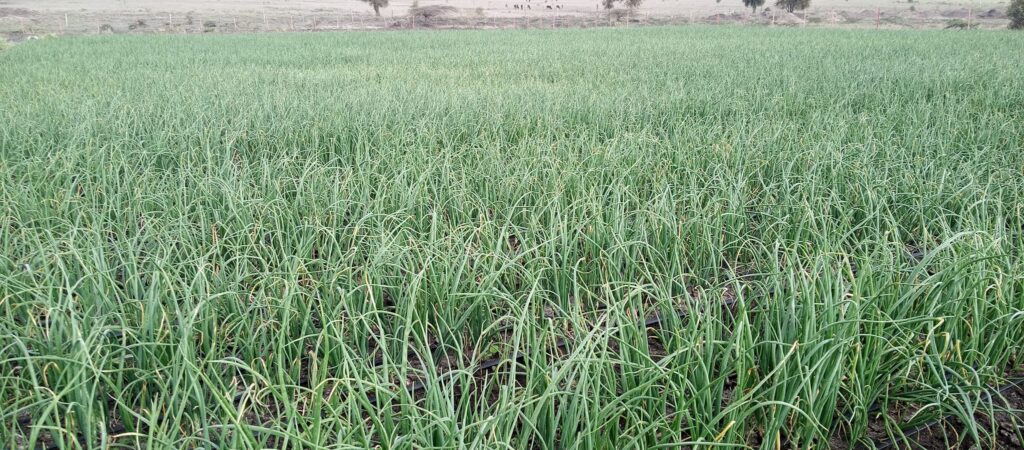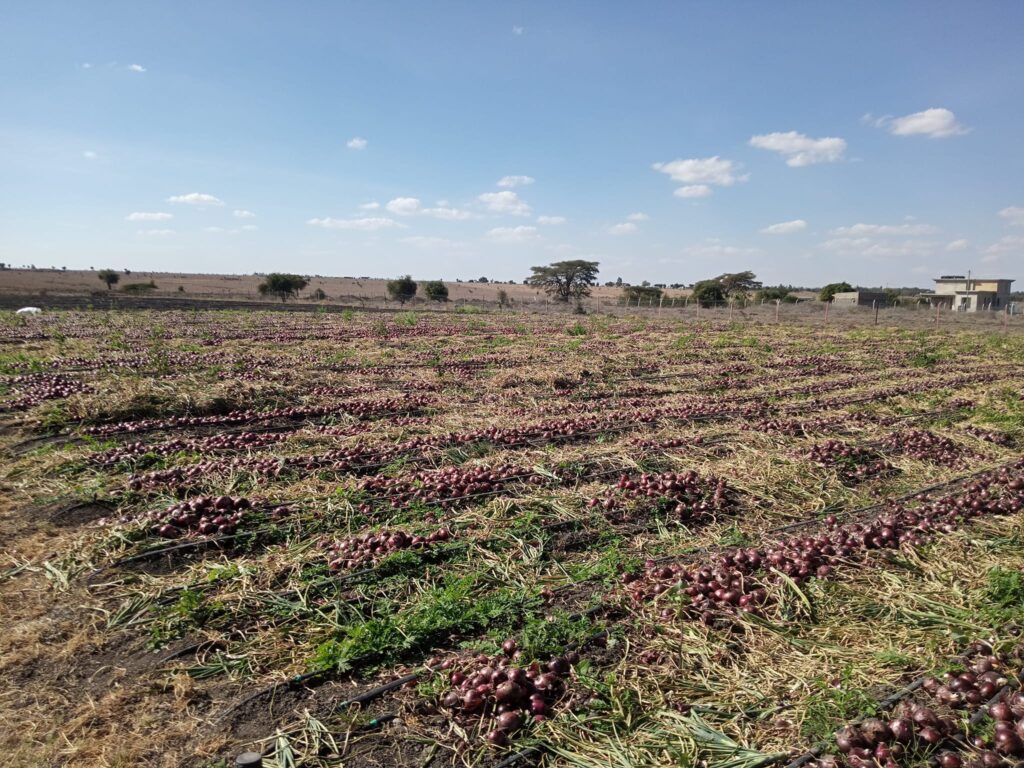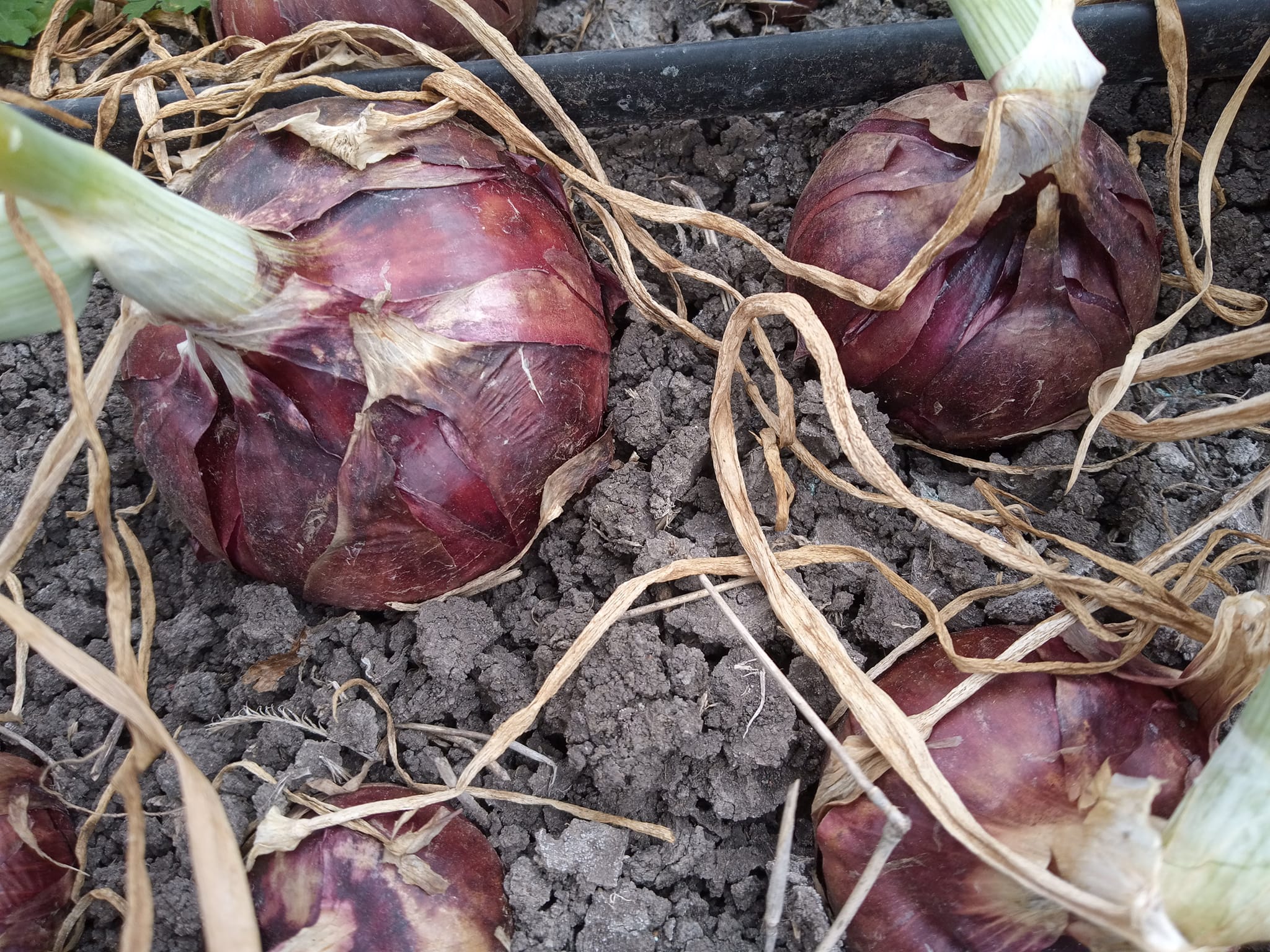Red Creole Onion Farming in Kenya
Red Creole onions, known for their mild flavor and vibrant red color, are a popular choice among Kenyan farmers. These onions not only cater to local demand but also have significant export potential.
With proper cultivation practices, farmers can achieve substantial yields and enhance their income.
Red Creole Onion Seeds for One Acre
For planting Red Creole onions on one acre, the recommended seed rate varies depending on whether you are direct seeding or transplanting seedlings. Generally, the seed requirements are as follows:
- Direct Seeding: Approximately 3 kg of seeds are needed per acre.
- Transplanting: About 1.5 kg of seeds is sufficient for one acre.
This variation in seed quantity is due to differences in planting density and methods used.
Price Of Red Creole Onion Seeds
The price of Red Creole onion seeds in Kenya can vary significantly based on the supplier and the quantity purchased. Here are some typical price ranges:
- 25g Pack: Approximately KSh 286 to KSh 350.
- 50g Pack: Around KSh 490 to KSh 560.
- 250g Pack: Prices can go up to KSh 1,640.
- 1kg Pack: Prices can reach KSh 8,400 or higher depending on the supplier.
Red Creole Onion Yield Per Acre
Average Yield: Under optimal agricultural practices, the average yield for Red Creole onions can reach between 16,000 kg to 20,000 kg per acre. This yield is achievable when farmers adhere to recommended agronomic practices, including proper irrigation, pest management, and soil fertility management.
Factors Influencing Yield: The yield can be significantly influenced by factors such as:
-
- Soil Quality: Well-drained, fertile soils enhance growth and yield.
- Irrigation: Consistent and adequate watering is crucial, especially during dry spells.
- Pest and Disease Management: Effective control measures help prevent crop losses.
- Planting Density and Spacing: Proper spacing (typically 30 cm x 10 cm) allows for optimal growth and reduces competition among plants.
Red Creole Onion Maturity Period
The maturity period for Red Creole onions ranges between 90 to 120 days from planting, depending on environmental conditions and farming practices.
Regular monitoring for pest and disease control is crucial during this period to ensure healthy crop development. Harvesting should commence when about 80% of the onion tops have fallen over.
Red Creole Onion Spacing
Proper spacing is vital for Red Creole onions to thrive. The recommended spacing is 10 cm between plants and 30 cm between rows.
This arrangement allows for adequate air circulation, reducing the risk of fungal diseases, and ensures each plant has enough space to develop fully.
Red Creole Onion Nursery
Establishing a nursery is an efficient way to manage Red Creole onion seedlings. Start by selecting a shaded area and prepare raised beds with fine soil.
Sow the seeds in rows spaced 15 cm apart and cover lightly with soil. Water the beds regularly to maintain moisture. Seedlings are ready for transplanting when they reach 3-4 weeks old and are about 15 cm in height.
Red Creole Onion Size
Red Creole onions are medium-sized, typically weighing between 80 to 120 grams each. They have a flattened globe shape and a deep red color, which makes them visually appealing in the market. The size can vary based on growing conditions and the care taken during cultivation.

How To Grow Red Creole Onion
Growing Red Creole onions involves several critical steps to ensure a bountiful harvest. The process begins with selecting a suitable location with well-drained, fertile soil and adequate sunlight. Onions thrive in loose, sandy loam soils rich in organic matter.
Climate Requirements
Optimal Climate for Growing
The Red Creole onion thrives in warm climates, typically flourishing in regions with temperatures ranging between 15°C and 25°C. These conditions are prevalent in many parts of Kenya, including areas such as Narok, Makueni, and parts of Rift Valley.
Adequate sunlight, combined with well-distributed rainfall or reliable irrigation, ensures optimal growth and yield. While these onions are relatively drought-tolerant, consistent moisture during the growing season is crucial for bulb development.
Soil Requirements
Soil Preparation and Fertility
Red Creole onions prefer well-drained, sandy loam soils with a pH level between 6.0 and 6.8. Soil preparation begins with thorough tilling to break up compacted layers, followed by the incorporation of organic matter such as compost or well-rotted manure to enhance fertility.
Regular soil testing can help farmers adjust pH levels and nutrient content, ensuring the soil is conducive to healthy onion growth.
Seed Selection and Preparation
Choosing Quality Seeds
Selecting high-quality seeds is critical for a successful crop. Farmers should source seeds from reputable suppliers who guarantee germination rates and disease resistance. Hybrid seeds, while more expensive, often offer better yields and resilience against pests and diseases.
Seed Treatment
Prior to planting, seeds should undergo treatment to prevent fungal infections and promote healthy germination.
This may involve soaking seeds in a fungicide solution or using natural alternatives like neem oil. Properly treated seeds can significantly increase the chances of a healthy and bountiful harvest.
Planting Techniques
Seedling Preparation
Starting with robust seedlings is key. Seeds can be sown in nursery beds or trays and should be kept in a warm, humid environment until they sprout. Once seedlings reach about 15 cm in height, they are ready for transplanting.
Direct Sowing Methods
Alternatively, direct sowing can be employed, where seeds are planted directly into prepared fields. This method requires precise spacing—typically about 10-15 cm between plants and 30 cm between rows—to allow for adequate bulb development.
Irrigation Practices
Efficient Water Management Techniques
Onions have shallow root systems, making consistent moisture crucial. Drip irrigation is highly recommended as it conserves water and delivers it directly to the plant roots.
Overhead irrigation can also be used but should be monitored to prevent waterlogging and reduce the risk of fungal diseases. During the bulb formation stage, regular watering is essential to achieve good size and quality.
Fertilization Strategies
Organic vs. Chemical Fertilizers
Balanced fertilization is vital for the health of Red Creole onions. Organic fertilizers, such as compost and manure, improve soil structure and fertility over time. Chemical fertilizers, while effective, should be used judiciously to avoid soil degradation.
A typical fertilization schedule might include an initial application of a balanced NPK (nitrogen, phosphorus, potassium) fertilizer, followed by periodic feedings as the plants grow.
Weed Management
Effective Weed Control Methods
Weeds compete with onions for nutrients and water, so maintaining weed-free fields is essential. Mulching with organic materials like straw can suppress weed growth and retain soil moisture.
Manual weeding is effective but labor-intensive, while herbicides can be used selectively to control persistent weeds without damaging the onion plants.
Pest and Disease Control
Common Pests
Red Creole onions are susceptible to pests such as thrips, onion flies, and nematodes. Regular monitoring and early intervention are crucial. Biological control methods, including introducing natural predators like ladybugs, can help manage pest populations.
Chemical pesticides should be a last resort, applied according to manufacturer guidelines to minimize environmental impact.
Disease Management Practices
Fungal diseases like downy mildew and botrytis can devastate crops if not managed promptly. Ensuring good air circulation by proper plant spacing, removing infected plants, and using fungicides when necessary can keep these diseases in check. Crop rotation and field sanitation are also effective strategies to reduce disease incidence.
Harvesting Red Creole Onions
Signs of Maturity
Red Creole onions are ready for harvest when the tops begin to yellow and fall over. This typically occurs about 90-120 days after planting. Bulbs should be firm and of the desired size before they are pulled from the ground.

Proper Harvesting Techniques
To harvest, gently lift the onions with a garden fork to avoid bruising. After lifting, allow the onions to cure in a dry, well-ventilated area for several days. This curing process helps to toughen the skins, making them more resistant to damage and rot during storage.
Post-Harvest Handling
Cleaning, Sorting, and Storage
Post-harvest handling involves cleaning the bulbs of soil, sorting them by size and quality, and storing them in a cool, dry place.
Proper storage conditions, with temperatures around 0-5°C and low humidity, can extend the shelf life of onions for several months. Packaging onions in mesh bags allows for adequate air circulation, further preventing spoilage.
Marketing and Sales Strategies
Finding Markets
Farmers can sell their produce through various channels, including local markets, supermarkets, and directly to consumers through farm stands or online platforms.
Building relationships with buyers and understanding market demand can help farmers get the best prices for their onions.
Pricing Strategies
Competitive pricing is essential to attract buyers while ensuring profitability. Farmers should consider production costs, market prices, and consumer willingness to pay when setting prices. Offering bulk discounts or special promotions can also drive sales.
Challenges in Onion Farming
Common Issues and Solutions
Onion farming in Kenya faces several challenges, including erratic weather patterns, pest and disease outbreaks, and fluctuating market prices.
Implementing resilient farming practices, such as diversifying crops and adopting sustainable techniques, can mitigate some of these risks.
Staying informed about agricultural trends and advancements can also help farmers adapt to changing conditions.
FAQs
What are the best climatic conditions for Red Creole onion farming?
Red Creole onions thrive in warm climates with temperatures between 15°C and 25°C, adequate sunlight, and well-distributed rainfall or reliable irrigation.
How do you prepare the soil for Red Creole onion farming?
Prepare the soil by tilling to break up compacted layers, incorporating organic matter to enhance fertility, and adjusting pH levels through regular soil testing.
What are the common pests affecting Red Creole onions and how can they be controlled?
Common pests include thrips, onion flies, and nematodes. Control methods include regular monitoring, introducing natural predators, and using chemical pesticides as a last resort.
How can farmers ensure good post-harvest handling of Red Creole onions?
Proper post-harvest handling involves cleaning bulbs of soil, sorting by size and quality, and storing in a cool, dry place with adequate air circulation to prevent spoilage.
What are the benefits of growing Red Creole onions in Kenya?
Growing Red Creole onions offers several benefits, including high market demand, resilience to diseases, and the potential for high yields. Their long shelf life also makes them suitable for both local and export markets.
How do I control pests and diseases in Red Creole onions?
Regular monitoring and timely intervention are key to controlling pests and diseases. Use of organic and chemical pesticides, crop rotation, and proper spacing can help manage common issues such as thrips, onion fly, and downy mildew.
What is the ideal soil for Red Creole onions?
Red Creole onions thrive in well-drained, sandy loam soils with a pH between 6.0 and 6.8. Adding organic matter can improve soil fertility and structure, promoting healthy root development.
Can Red Creole onions be grown organically?
Yes, Red Creole onions can be grown organically. Using organic fertilizers, compost, and biological pest control methods can produce healthy onions while maintaining soil health.
